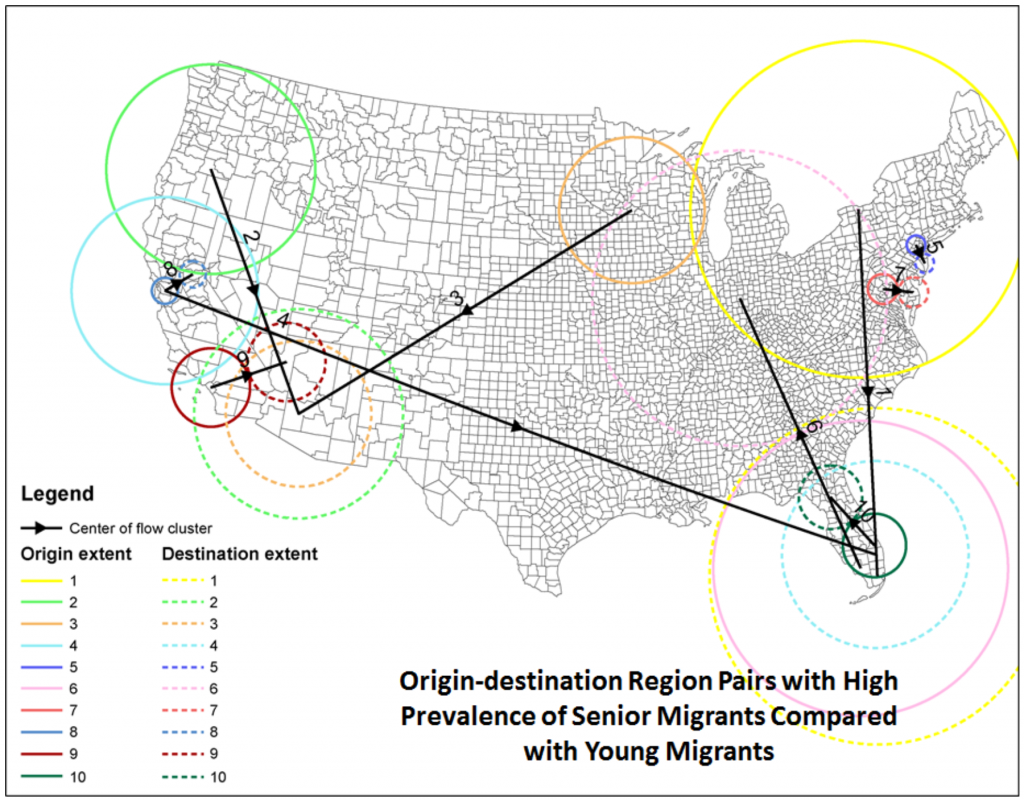The analysis of geographic mobility data and associated spatial interactions is of great importance to understanding complex geographic phenomena and their space-time dynamics.
This research project aims to design and develop innovative data models and analytical methods for data-intensive movement analysis. Statistical and computational approaches are developed to study spatial patterns of origin-destination movement flows and more generally spatial interactions. Specifically, a multidimensional spatial point data model has been developed, which models each OD movement flow as a point with four spatial dimensions, two for its origin and two for its destination. It is then possible to detect spatial movement patterns by analyzing the 4D point patterns, using methods such as scan statistics. For instance, with a bivariate 4D point process model, we can evaluate the differences and similarities between the spatial distributions of a pair of OD movement datasets, and detect areas where the two spatial distributions differ the most. A multidimensional Bernoulli spatial scan statistics method is developed to detect OD region pairs with abnormally high concentrations of one movement dataset over the other. Experiments demonstrate that our method can effectively detect spatial patterns from large movement datasets, and is applicable to both individual-level and aggregated movement data.
People: Yizhao Gao (ygao29@illinois.edu), Ting Li (tingli3@illinois.edu), Shaowen Wang (shaowen@illinois.edu), Myeong-Hun Jeong (mhjeong@myeonghun.org), Kiumars Soltani (soltani2@illinois.edu)

Publications:
- Yizhao Gao, Ting Li, Shaowen Wang, Myeong-Hun Jeong & Kiumars Soltani (2018) “A multidimensional spatial scan statistics approach to movement pattern comparison”. International Journal of Geographical Information Science. 32:7, 1304-1325, DOI: https://doi.org/10.1080/13658816.2018.1426859


